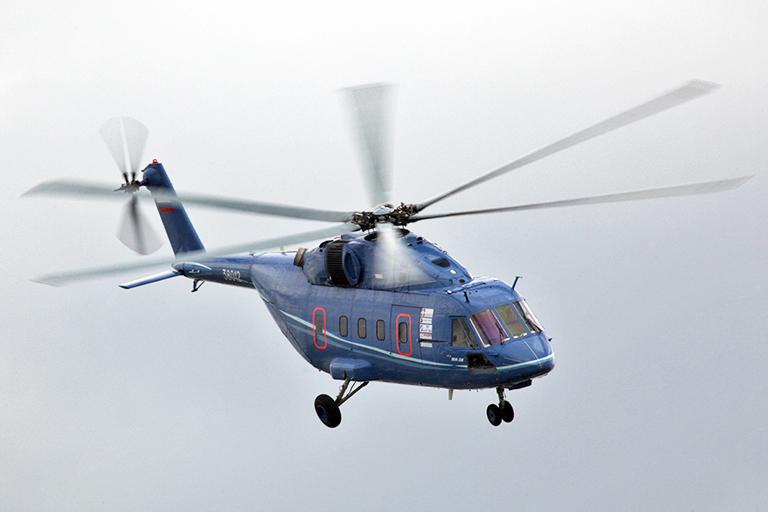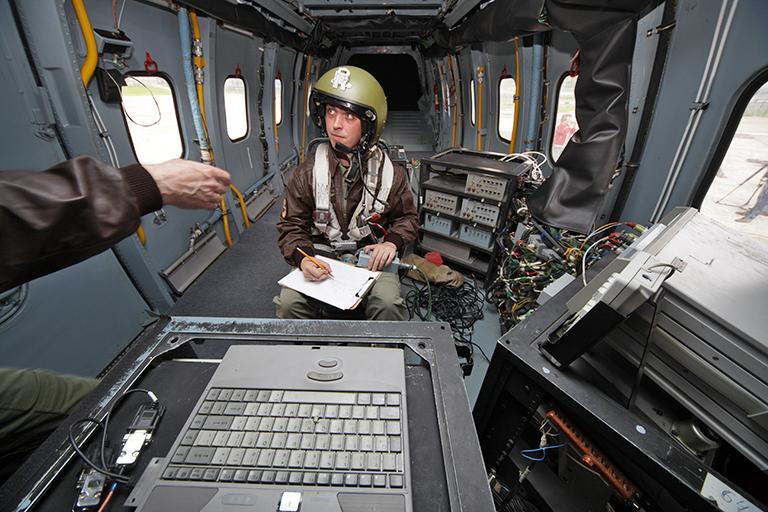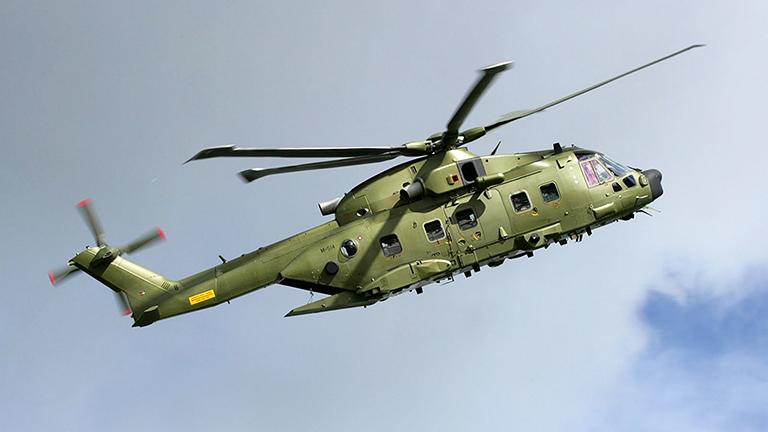After 30 years of development, the helicopter incorporates all the latest technologies.

Mi-38 OP-2
Originally appeared at Svpressa, translated by Mario Kuoljok exclusively for SouthFront; Edited by Desi Tzoneva
Company Helicopters of Russia reported in a press release that a military version of the Mi-38 will be created by 2018. It is an anticipated step by Mil because the excellent flight performance of this helicopter will be useful in the army.
This machine had a hard life due to hardships experienced in the aviation industry during a dramatic period in the country’s history. Mil began to create the Mi-38 as a further development of the “star” line of the Mi-8 in the mid-80s. In 1989, the design was finished, which caused great interest among specialists at the international air show in Le Bourget.
After that, opposing the industry’s degradation, lack of funding and the downsizing of professional personnel, Mil still built the first prototype in 2002. The first flight was done in 2003, and flight demonstrations took place with great success. It was then planned that the helicopter would be built in serial production at the Kazan helicopter plant (CVD) in the near future.
However, the helicopter got “his blades cut.” In a period of rapid construction, a joint venture was formed with foreign firms, the Mil Kazan helicopter plant, the Klimov Plant and German company, Eurocopter. As a result of complex political, administrative and economic processes, the joint venture collapsed and the Mil financing dried up. This was due to the fact that the Ministry of Defence refused to give the order for a new helicopter. The Mi-38 flew with foreign PW127TS engines, made by Pratt & Whitney Canada. The legacy of the joint venture and the avionics were mostly foreign. Investors had little interest in the civil version of the machine at that time.
But at the end of the 21st century, and with maximum administrative ingenuity, Mil still received funding directly from the “two mothers.” Half a billion rubles for the “Russification” of the helicopter were simultaneously allocated by both Oboronprom and the government, which entered the Mi-38 in the Federal targeted programme for development of civil aeronautical engineering.
However, the second prototype, the building of which started in the late 90s, was rather a “half-breed.” It was equipped with domestic avionics by the company, Transas Aviation. For example, the Mi-38 received a ‘glass cockpit’, consisting of five LCD displays and a “smart” autopilot. However, the engines were still Canadian. The machine’s first flight was in 2011.
The third prototype made in the year 2013, was already fully Russian. It contained two turbo-shaft engines from the OKB Klimov – Tv7-117 – which were developed specifically for this helicopter. The fully-Russian modification received the designation, Mi-38-2.
A year later, the fourth prototype was ready, which was the last pre-production helicopter.

Mi-38 OP-2 Photo: TASS/Marina Lisceva
However, mass production has not yet started, despite the fact that the machine turned out so well, and was already awarded a certificate from Rosaviatsia. The Mi-38 has excellent flying qualities. For a medium-class helicopter, with a takeoff weight of between 10 tons (t) and 20 t, it established several world records. Without cargo, it rose to a height of 8 600 metres (m). One thousand kilogrammes of weight were lifted to a height of at 8 000 m and 2 000 pounds were lifted to a 7 020 m height. Another record climb was made; in only six minutes, the Mi-38 climbed without cargo to a height of 3 000 m.
In performance, the Mi-38 is usually compared to the Mi-8 because the machine is in the same class. The cost in terms of t/km of the new machine is seven times lower than that of the Mi-8. The cost of the Mi-38 is merely one and a half times higher than Mi-8 because. So, it has major economic benefits.
The maintenance is easier because the machine is equipped with self-diagnostic equipment. The overhaul engine life is 1 000 hours. The developers intend to bring it up to 4 000 hours. The auxiliary power unit provides a capacity of 30 kilowatts (kW).

Photo: TASS/Marina Lisceva
The helicopter has excellent reliability and durability that makes it perfectly suited for the military. It is fitted with emergency power engines, which allow it to safely complete its flight in case one of them fails. This is achieved by increasing the take-off power from 2 500 horse power (HP) up to 3 700 HP. This is only possible on one other helicopter: the military multipurpose British-Italian AgustaWestland AW101, which is equipped with three Rolls-Royce engines.

AgustaWestland AW101 Photo: alphacoders.com
The onboard avionics complex has a triple redundancy of key sensors controlling the state of all systems of the helicopter. The navigation system works with constantly-updated databases of terrain and artificial obstacles, as well as navigational databases. In addition, the flight navigation system not only ensures the flight route, freezing and stabilising of the helicopter, but also has a fully automatic landing in any weather and at any time of the day.
Improving the safety of flights was also achieved through the use of a fire-resistant emergency fuel system. A 30-minute flight without oil in the engine and in the main gearbox is possible. A shock-absorbing device is utilised to prevent an accident in the event of a rough landing. All this makes the helicopter fit for dual-use: civilian and military. The survivability of the Mi-38 is definitely similar to an attack aircraft which operates in battle.
The advantages of the Mi-38 also include the rotor, which is made of composite materials, emits low noise and functions at high speed, has a large capacity, a spacious passenger compartment with a capacity of seating 30 people and the ability to transport cargo on an external sling.
Of course, stretching over nearly 30 years, the development of the helicopter is a rather sad phenomenon. However, in this particular case one could say: “wouldn’t it be a blessing in disguise?” Throughout all these years, there were constant improvements made to the quality of the helicopter – it periodically received new systems, more effective materials were used, engine performance improved, reliability increased as did performance and safety. The result is a completely modern helicopter, which uses the latest technology and, of course, is as universal as his “grandfather,” the Mi- 8, which operated from the 60s of the last century.
The army intends to use the Mi-38 as a jammer, for emergency rescue operations, as troop transport helicopters, as well as for operations in arctic conditions. It is possible that in the future, there will be a desire to make attack, command and intelligence modifications.
The press release by Russian Helicopters states that Mil is currently working to increase the take-off weight of the Mi-38 for the army and increase the maximum altitude.







What “Power in emergency mode” means? can someone elaborate a bit that figure?
Is there a kind of “afterburner” in rotary / helicopter motors?
Some helicopters are able to fall down slowly and with certain control, using wind power from the friction generated by falling down.
Russia has honestly made better helicopters then the USA. I have heard this from friends in the US military who recognize the CIA’s information war about how the multi-racial USA makes better stuff, when in reality the USA is building junk equivalent to Chinese junk now haha.
China’s space station they built in 2011 is now falling to te earth. No quality craftsmanship whatsoever.
Russia, India, Japan, Germany, Italy, Iran know how to make quality goods.